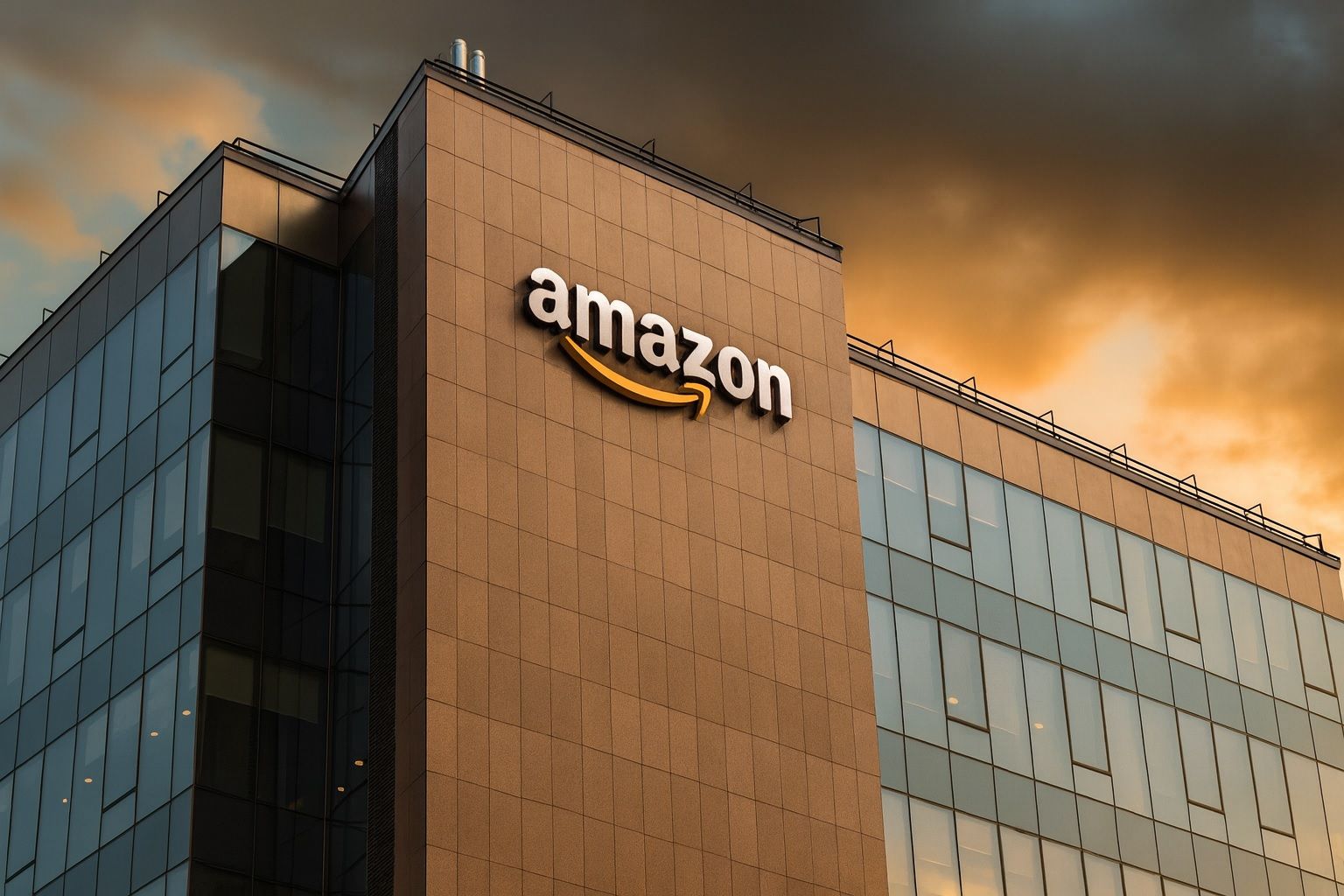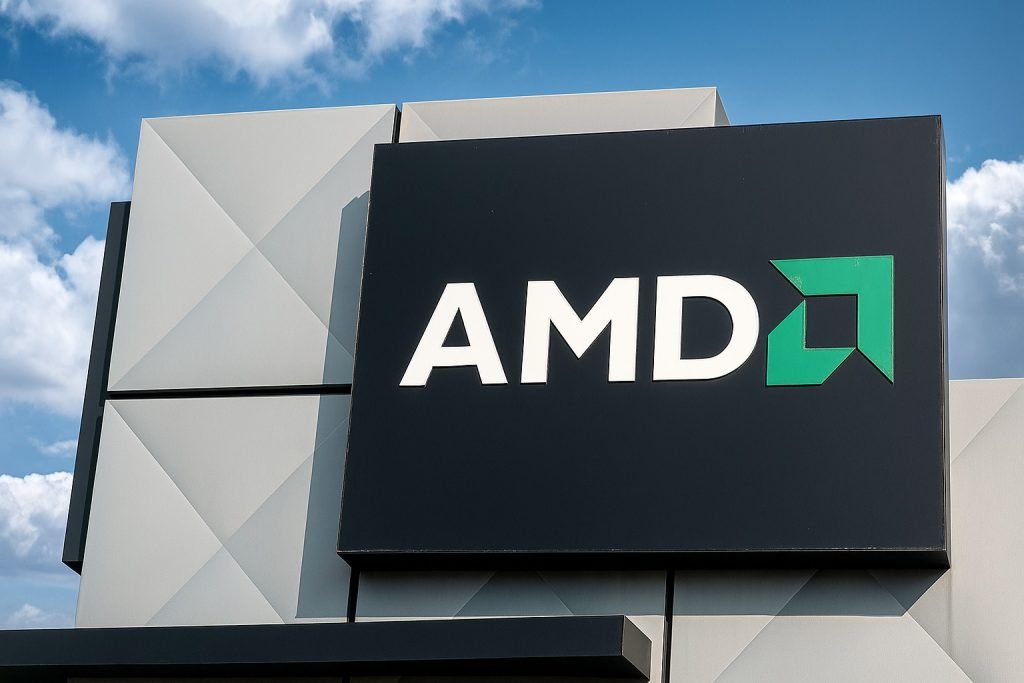Amazon.com Inc. (NASDAQ: AMZN) finished Thursday’s session under pressure, extending a two‑day pullback even as Wall Street continues to debate whether the e‑commerce and cloud giant is still a buy after a powerful 2025 rally.
On November 13, 2025, Amazon stock closed at $237.58, down 2.71% (‑$6.62) from Wednesday’s close at $244.20. [1] Trading volume jumped to just over 41 million shares, well above the prior day’s roughly 31 million shares, a sign that sellers were more active than usual. [2]
That decline came on one of the worst days for U.S. stocks in over a month:
- The S&P 500 fell about 1.7% to 6,737.49
- The Dow Jones Industrial Average dropped about 1.7% (nearly 800 points) to 47,457.22
- The Nasdaq Composite slid roughly 2.3% to 22,870.36 [3]
Against that backdrop, Amazon underperformed the broader market and most consumer names. MarketWatch data notes that while Best Buy fell 1.97% and Apple only 0.19%, Amazon dropped 2.71% to $237.58. [4]
Amazon stock price on November 13, 2025: Key numbers
According to historical data from StockAnalysis and Yahoo Finance, Amazon traded in a relatively wide range on Thursday: [5]
- Open: ~$243.05
- Intraday high: ~$243.75
- Intraday low: around $236.5
- Close:$237.58
- Daily move: ‑2.71%
- Volume: ~41 million shares, up meaningfully from ~31 million the prior session
Technical services such as StockInvest highlight that despite back‑to‑back down days, AMZN is still up about 6–7% over the last two weeks, reflecting how strong the prior rally has been. [6]
Even after today’s drop, Amazon remains not far below its all‑time closing high of $254.00 set on November 3, 2025, underscoring how elevated the share price still is versus earlier in the year. [7]
Why is Amazon stock down today?
1. A tech‑led risk‑off day on Wall Street
Thursday’s slide in AMZN came as part of a broad tech selloff. Market coverage from AP and Investopedia points to investors rotating out of richly valued AI and growth names amid renewed uncertainty around the timing and scale of future interest‑rate cuts. [8]
High‑multiple tech stocks bore the brunt of the move. Index recap pieces note that heavyweight names like Nvidia, Tesla, and other high‑beta names were among the biggest drags on the Nasdaq. [9]
Within the “Magnificent Seven,” Amazon was one of the weaker performers. A Barron’s‑syndicated report (via MarketWatch data feeds) highlighted that Apple slipped only about 0.2%, while peers such as Amazon, Alphabet and Nvidia saw declines closer to 2–3% or more. [10]
In short, AMZN didn’t fall in a vacuum—it was part of a broader, valuation‑driven shake‑out in big tech.
2. Short‑term disappointment around holiday catalysts
A same‑day analysis from FXLeaders argues that Amazon’s stock has “come under renewed pressure” this week, dropping more than 4.5% across two sessions, as traders question how much more upside is left after a huge 2025 run. [11]
The article points to several near‑term factors: [12]
- Black Friday and Cyber Monday promotions (starting November 20) have so far drawn a muted market reaction, even with heavily marketed deals and a $25 Thanksgiving meal package.
- New AI‑powered shopping features aimed at personalizing the holiday buying experience haven’t translated into a renewed surge in the share price.
- With tech valuations stretched, some investors appear to be using the holiday headlines as an opportunity to take profits rather than chase the stock higher.
In other words, the market is now demanding evidence of sustained earnings and cash‑flow growth, not just promotional buzz.
3. Ongoing legal and regulatory overhang
Legal “clouds” also remain part of the story. In October, Amazon agreed to a $2.5 billion settlement with the U.S. Federal Trade Commission over allegations that it used deceptive “dark patterns” to steer customers into Prime and make cancellation unreasonably difficult. [13]
Regulators alleged that Amazon internally referred to its Prime cancellation maze as the “Iliad Flow”, a multi‑step process that made it harder for users to end their memberships. [14]
While the $2.5 billion penalty is modest relative to Amazon’s roughly $2.5 trillion market capitalization, it reinforces concerns about: [15]
- potential reputational damage,
- tighter compliance and oversight costs, and
- the risk of future regulatory actions across Amazon’s sprawling businesses.
FXLeaders notes that this legal overhang has made it harder for the stock to hold onto gains, even when the company posts solid operating results and announces eye‑catching expansion plans. [16]
4. “Rich but not broken”: valuation hangover after a big run
Fundamental research from Trefis, published November 13, describes Amazon’s valuation as “High” but the stock itself as “Fairly Priced” given its strong growth, profitability, and balance sheet. [17]
Trefis highlights: [18]
- Last‑12‑months revenue of about $670 billion, up 11% year over year.
- Operating income of $76 billion (11.4% margin).
- Net income of $71 billion (10.5% margin).
- Cash of $93 billion versus $134 billion of debt, implying low leverage relative to its market cap.
But it also notes that Amazon trades at: [19]
- Price‑to‑sales around 3.9x (vs. ~3.2x for the S&P 500)
- Price‑to‑earnings near 36.8x (vs. ~23.6x for the index)
- Price‑to‑free‑cash‑flow above 190x, far higher than the market’s ~20x
That combination—very strong fundamentals but very rich multiples—helps explain why any hint of macro worry or legal risk triggers outsized moves in the share price. When markets de‑risk, stocks like Amazon are often first in line for profit‑taking.
Growth story still alive: satellites, AI procurement and IoT
Despite the pullback, November 13 was also a busy strategic news day for Amazon, with several announcements that speak to the company’s long‑term ambitions.
Amazon Leo: satellite broadband gets a permanent brand
Amazon officially rebranded its Project Kuiper satellite broadband initiative as “Amazon Leo” on Thursday. [20]
According to Amazon’s own announcement and Bloomberg’s coverage: [21]
- “Kuiper” was always meant as a code name; “Amazon Leo” is now the permanent brand.
- The company has built one of the largest satellite production lines in the world and has already deployed more than 150 satellites into low Earth orbit.
- Amazon has signed up early partners such as JetBlue, L3Harris, DIRECTV Latin America, Sky Brasil and Australia’s NBN Co.
- The goal is to build a global satellite broadband network to compete directly with SpaceX’s Starlink.
For investors, Amazon Leo is not yet a material profit center, but it represents a new infrastructure‑heavy, recurring‑revenue opportunity that could deepen Amazon’s competitive moat in connectivity and cloud.
Amazon Business: pushing AI deeper into procurement
At its Reshape 2025 conference, Amazon Business used November 13 to outline what Digital Commerce 360 called its “most expansive vision yet” for AI‑driven procurement. [22]
Key announcements included three new tools, all powered by Amazon Bedrock, the company’s generative AI platform on AWS: [23]
- Amazon Business Assistant – a conversational assistant that guides employees through account setup, policy‑compliant ordering, and savings opportunities.
- Savings Insights – an analytics engine that scans order histories, contracts, and supplier catalogs to surface missed discounts and lower‑cost alternatives.
- Spend Anomaly Monitoring – real‑time alerts for unusual spending patterns, out‑of‑policy purchases, or budget overruns.
Executives framed these tools as a step toward “autonomous procurement,” where systems do more of the heavy lifting and human buyers step in mainly to approve or override recommendations. [24]
For shareholders, that’s another sign that Amazon is not just a retailer, but also an enterprise software and data platform increasingly embedded in corporate workflows.
AWS + Amazon Sidewalk: expanding the IoT footprint
On the AWS side, Amazon also announced a new integration between AWS IoT Core Device Location and Amazon Sidewalk, the company’s shared low‑bandwidth wireless network. [25]
The update allows developers to: [26]
- Determine the location of Sidewalk‑enabled devices without adding power‑hungry GPS modules.
- Use Bluetooth, Wi‑Fi or GNSS signals to resolve location in the cloud via AWS IoT Core.
- Route GeoJSON location data into other AWS services through MQTT topics or IoT rules.
Amazon notes that Sidewalk now covers more than 90% of the U.S. population, opening IoT opportunities in asset tracking, smart‑city projects, and industrial tools. [27]
While none of these initiatives moved the stock price on Thursday, they reinforce the long‑term growth narrative behind AWS, Amazon Business, and Amazon Leo—all of which underpin the bullish case for AMZN beyond next quarter’s earnings.
What are analysts and valuation models saying about AMZN now?
Despite recent volatility, Wall Street remains broadly positive on Amazon.
Street consensus: still a “Strong Buy”
StockAnalysis aggregates 47 analyst ratings and shows an overall “Strong Buy” consensus on AMZN, with a 12‑month average price target around $280.15—about 18% upside from current levels. [28]
Another forecast, cited in a MarketBeat technical piece, pegs the average target even higher at about $294.15, implying roughly 24% upside from a $237–$238 share price. [29]
In other words, most covering analysts still see double‑digit upside over the next year, even after 2025’s strong run.
Fundamental view: “fairly priced” but high expectations
The Trefis team values Amazon at around $278 per share, versus a current price near the high‑230s to low‑240s, suggesting mid‑teens upside. But crucially, they describe the stock as “Fairly Priced” because its strong growth and balance sheet justify a premium multiple. [30]
Trefis’s breakdown underscores that Amazon: [31]
- Is growing faster than the overall market (three‑year average revenue growth ~11.3% vs. ~5.5% for the S&P 500).
- Generates double‑digit operating and net income margins at massive scale.
- Carries relatively modest leverage, with cash exceeding a large portion of its debt.
This camp essentially says: yes, AMZN is expensive—but for good reasons.
Skeptical value view: deep overvaluation risk
Not everyone agrees. A discounted‑cash‑flow analysis published on AcquirersMultiple.com on November 13 pegs Amazon’s intrinsic value at just about $71 per share, versus a market price near $249 at the time of the analysis—implying roughly 72% downside and essentially no margin of safety for value‑oriented investors. [32]
That model assumes more conservative growth and cash‑flow trajectories than most Wall Street forecasts and serves as a reminder that valuation depends heavily on your assumptions about long‑term margins and investment needs in AI, logistics, and cloud infrastructure.
Technical picture: where does AMZN go from here?
Short‑term traders are watching a few key levels after today’s move:
- $240: FXLeaders notes that Thursday’s drop pushed Amazon back below the $240 area, which aligns roughly with prior resistance from September and early October. If that level fails to hold as new support, the next major zone many technicians are eyeing is around $230. [33]
- Record high near $254: With the all‑time closing high still fresh from November 3, bulls will be watching whether the stock can rebuild momentum toward that level once the current tech selloff cools. [34]
StockInvest’s short‑term trend work points out that even after the recent drop, the price has risen in 6 of the last 10 sessions, leaving the broader trend still upward over a two‑week horizon. [35]
What Amazon investors should watch after November 13, 2025
Looking beyond today’s red numbers, several catalysts will likely shape AMZN’s path from here:
- Holiday performance:
How consumers respond to Amazon’s Black Friday and Cyber Monday campaigns starting November 20—especially amid a mixed macro backdrop—will feed directly into Q4 revenue and margin commentary. [36] - Regulatory follow‑through:
The Prime settlement may not be the last word. Investors will watch for any new actions from U.S. or European regulators around competition, labor practices, or marketplace dominance. [37] - Monetization of new businesses:
Progress on Amazon Leo, AI‑driven procurement via Amazon Business, and advanced IoT solutions on AWS will help determine whether Amazon can keep expanding into new profit pools beyond classic retail and cloud. [38] - Interest‑rate path and AI sentiment:
If markets regain confidence in future Fed cuts and the AI trade, high‑multiple names like Amazon could quickly recover. If not, valuation compression could continue, even if fundamentals stay strong. [39]
Bottom line: A volatile day, not a broken story
For Thursday, November 13, 2025, the headline is simple: Amazon stock fell 2.7% to $237.58 amid a tech‑led market selloff, lingering legal overhangs, and rich expectations. [40]
But underneath the volatility, the company continues to:
- Grow revenue at a double‑digit pace,
- Invest heavily in cloud, AI, logistics, and now satellite broadband, and
- Roll out new tools that deepen its role in business and government purchasing. [41]
Whether AMZN is attractive at today’s price depends on your time horizon and risk tolerance. Most Wall Street analysts still see room for upside; some valuation models warn of steep downside. [42]
As always, this article is for informational purposes only and does not constitute financial or investment advice. Investors should do their own research or consult a licensed financial adviser before making decisions about Amazon stock.
References
1. stockanalysis.com, 2. stockanalysis.com, 3. apnews.com, 4. www.marketwatch.com, 5. stockanalysis.com, 6. stockinvest.us, 7. www.macrotrends.net, 8. apnews.com, 9. www.investopedia.com, 10. www.barrons.com, 11. www.fxleaders.com, 12. www.fxleaders.com, 13. www.businessinsider.com, 14. www.aboutlawsuits.com, 15. www.businessinsider.com, 16. www.fxleaders.com, 17. www.trefis.com, 18. www.trefis.com, 19. www.trefis.com, 20. www.aboutamazon.com, 21. www.aboutamazon.com, 22. www.digitalcommerce360.com, 23. www.digitalcommerce360.com, 24. www.digitalcommerce360.com, 25. aws.amazon.com, 26. aws.amazon.com, 27. aws.amazon.com, 28. stockanalysis.com, 29. www.marketbeat.com, 30. www.trefis.com, 31. www.trefis.com, 32. acquirersmultiple.com, 33. www.fxleaders.com, 34. www.macrotrends.net, 35. stockinvest.us, 36. www.fxleaders.com, 37. www.businessinsider.com, 38. www.aboutamazon.com, 39. www.investopedia.com, 40. stockanalysis.com, 41. www.trefis.com, 42. stockanalysis.com







